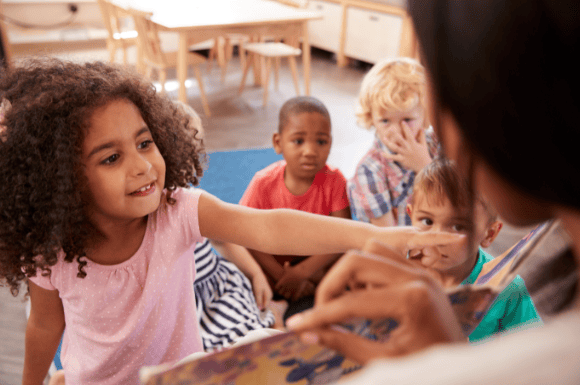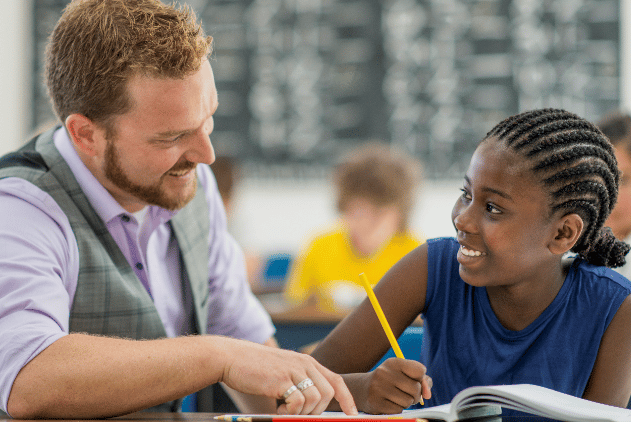- Raising Skilled Readers
- Posts
- The Science of Reading, Simplified
The Science of Reading, Simplified
No Ph.D. required: We break down what parents should know about the Science of Reading, including which research-backed skills kids should develop at each age, and why.

If you've been following education news lately, you've probably heard the term "Science of Reading" everywhere. It sounds complicated and maybe even intimidating—like something only researchers in white lab coats understand.
But the Science of Reading isn't a single, groundbreaking discovery. As Cindy Jiban from the Northwest Evaluation Association (NWEA) explains, it is "the converging evidence of what matters and what works in literacy instruction." It's about looking at thousands of studies to find patterns for what actually helps kids become better readers.
Jiban tells us that decades of research have revealed a pattern in how children learn to read. It's called the Simple View of Reading, and it looks like this: Word Recognition (WR) × Language Comprehension (LC) = Reading Comprehension (RC).
Notice the multiplication sign. Both factors are absolutely necessary. Neither can be zero, and when one is weak, it is tougher to compensate just by adding more of the other.
What does the equation mean in practice? Your child needs two things to grow into a strong reader who fully understands texts:
The skills to decode the words on the page (phonemic awareness, phonics, word-attack strategies)
The skills to grasp what the language means (fluency, vocabulary, background knowledge, text structures)
The list of skills above isn't revolutionary. Talented reading educators have known it intuitively, forever. But science confirms it. And, as researcher Timothy Shanahan points out, we can also use science to experiment and pinpoint which methods are most effective for teaching each skill in real classrooms. That data can help teachers craft lessons that work.
So, the Science of Reading tells us which skills kids need to learn and shows us the best ways to teach those skills. This is science with the power to shape how schools approach reading instruction in ways that will truly benefit your child.
TL;DR: The Science of Reading confirms what good teachers always knew—kids need systematic instruction in both word recognition and language comprehension skills.
In the rest of this issue, we'll let you know which skills your child should be working on at each age. You'll be able to keep track of reading development and ask your child's teacher plenty of questions, without needing a Ph.D. or hours to comb through scientific studies.
In today’s issue:

Starting with Phonics
During the pandemic, many parents were shocked that their young kids weren’t being taught to sound out words. Instead, they were expected to guess words using "context clues.” In her podcast, “Sold a Story,” journalist Emily Hanford dug deeper into the clash between teaching phonics vs. teaching meaning, a struggle that became known as the Reading Wars.
Backlash was swift. 45 states have now passed laws requiring phonics-based instruction in early elementary school.
Because of all the recent publicity, many people have come to equate the Science of Reading with phonics instruction only. As Shanahan warns, teachers and administrators "often assume that the science of reading refers to a single aspect of teaching reading." But that's missing the bigger picture. Remember the Simple View formula? Your child needs both word recognition skills and language comprehension skills to thrive.
Yes, children must be taught how to decode words, step by step. Without that foundational skill, they won’t be able to read independently. However, completely neglecting the other factor in the Simple View equation is a mistake. Even kindergartners benefit from rich vocabulary exposure, understanding story structure, and hearing fluent reading, all of which contribute to the eventual development of deep reading comprehension.


Expanding the Toolkit
Around fourth grade, something important happens in your child's reading journey. It is the often-cited shift from "learning to read" to "reading to learn." This shift doesn't mean phonics suddenly becomes irrelevant. In fact, learning how to read and reading to learn new information should be "a simultaneous and continuous process," according to the Journal of the Institute for Multisensory Education.
For example, your 4th or 5th grader will still need to know how to break down long, unfamiliar terms they encounter in science or social studies textbooks. And their word recognition ability must be strong enough to allow accurate, fluent reading in all of their assigned texts.
However, as reading expert Louisa Moats explains, "The language comprehension factor becomes very important from about fourth grade onward." And that naturally means the balance in our Simple View equation also starts to change. You’ll notice more and more instructional time in your child’s class devoted to building language comprehension skills like vocabulary, background knowledge, and complex sentence structures. That’s perfect—it’s the Science of Reading at work!


Building Future Success
Recently we got sobering news: 12th grade reading scores on the Nation's Report Card hit their lowest point in more than 20 years. These scores may be the product of approaches implemented decades ago, before greater emphasis on science-based reading instruction. (The pandemic and increased screentime surely haven’t helped.) Hopefully, results will look different in 20 years. But there are instructional techniques that can start making a difference right now.
Don’t forget: the Science of Reading isn't just about little kids learning phonics. As teacher Auddie Mastroleo reiterates, "Decoding is just the beginning. The goal of reading is not just developing word recognition. It is comprehension—the ability to read deeply and joyfully and understand what you read." This sounds like the Simple View of Reading, where strong reading comprehension is the product of the equation.
Middle and high school teachers can help teens achieve deeper reading comprehension with research-backed instruction that weaves together advanced word recognition and language comprehension skills to give students new experiences. You should see your teen being asked to use their existing skills to engage in higher-level verbal reasoning, class discussions, and lively debates. When secondary teachers design assignments this way, they're preparing students to handle increasingly complex texts across all subjects and, ultimately, to succeed as readers and thinkers.
